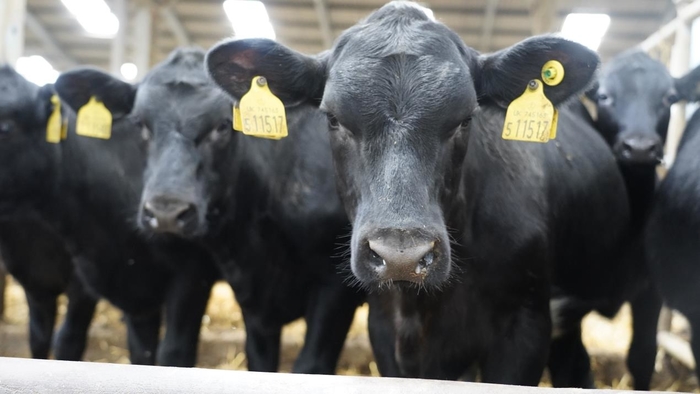Improving genetics is the key to reducing farmers’ carbon footprints and maximising efficiencies, according to research by ABP.
At a time when the livestock industry is under intense pressure to reduce its emissions, the firm’s research has shown that significant environmental and financial gains can be made through simple breeding choices.
ABP has a goal to reduce its emissions by 1.9m tonnes by 2030 – and with 78% of its emissions linked to live cattle its focus has understandably been on reducing animals’ footprints.
“For ABP to play its part in the environmental crisis we need to look at how to support and enable farmer suppliers to lower their footprint,” explains Dean Holroyd, group technical and sustainability director at ABP. “Economic and environmental benefits travel hand in hand – if you have efficient animals then it helps the bottom line and the environment.”
With over 20,000 calves a year going through ABP’s Blade Farming system, it has been able to evaluate the impact that different genetics have on productivity. Working with Genus it has looked at growth rates, feed conversion efficiencies, carcass values and eating quality – as well as calving ease and fertility performance in the source dairy or beef suckler cows.
At its Bromstead demonstration farm in Shropshire, it has found a £250 differential between the best and worst Aberdeen Angus sires. Progeny from the worst averaged 274kg deadweight while those from the best averaged 334kg.
Feed conversion efficiencies were similarly affected; over a 12-week rearing period progeny from sire 12 averaged 6.4kg of feed per kg of growth, compared to sire five at 7.37kg. “At a value £1.20/kg liveweight, that equates to a £24 variance,” explains Mr Holroyd. “So you have similar feed going in but extra weight coming out.”
Bringing all of that information together has enabled the firm to identify the most efficient sires: Progeny from the top five averaged a gross margin (value minus variable costs and overheads) of £225.79 whereas offspring from the bottom five sires averaged just £81.28 a head.
When it comes to environmental impact, those efficiencies have a marked effect. At Bromstead, based on a slaughter age of 20 months, offspring from the best sire averaged 7.29kg of carbon equivalent emissions per kg of meat (2,543kg/head) while those from the worst sire averaged 8.53kg.
“The average age at slaughter in the UK is 26.5 months, so emissions average 10.76kg (3,498kg/head); that’s 47% more than offspring from the best sire at Bromstead,” says Mr Holroyd. “If you roll that out across the industry that will have a huge impact.”

The farm has also been trialling ZELP collars which measure and reduce methane emissions by up to 50%, and will look at the impact that different grazing and farm management practices have on the environment and production economics.
“As an industry, we’re challenged a lot on our environmental credentials,” says Richard Phelps, ABP’s Agriculture Director and Managing Director of Blade Farming. “We need to move away from being defensive to finding solutions and giving farmers positive tools to them to use.”
By monitoring and reducing cattle’s environmental footprint, farmers will then be able to monetise it through carbon trading. “We are working towards net zero farming while balancing productivity, economics and environmental sustainability,” explains Liz Ford, senior agri-projects manager at ABP. “We want to create a blueprint for the whole beef sector.”


